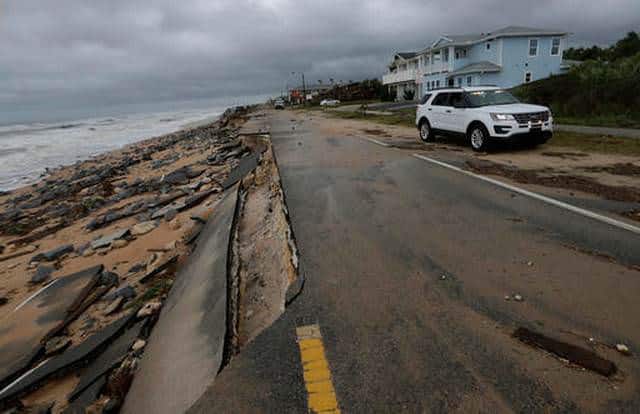
Florida mops up in the aftermath of Hurricane Matthew
Gov. Rick Scott has activated the Florida Small Business Emergency Bridge Loan Program for small businesses physically and/or economically impacted by Hurricane Hermine and Hurricane Matthew. The loans provide short-term, interest-free working capital to bridge the gap until a company has secured a longer-term resource.
The Federal Emergency Management Agency (FEMA) approved aid to the state and local governments for debris removal and emergency protective measures. The counties within the FEMA move include Brevard, Duval, Flagler, Indian River, Nassau, St. Johns, St. Lucie and Volusia counties. A pending request for additional federal disaster aid would help individuals and businesses, and repair roads along with other public structures.
“While we are blessed that Hurricane Matthew did not make landfall in Florida, there has been significant damage all across Florida’s east coast,” Gov. Rick Scott said in a statement Sunday.
Scott, who viewed storm damage in Jacksonville Beach on Sunday, said he has been traveling Florida’s east coast, from Brevard County to the Florida-Georgia state line, over the past three days. The governor said he’s “seen homes wiped out, severe beach erosion, flood damage and downed trees and power lines.”
“While the state is helping our communities any way we can, I am going to continue to fight for every available resource from the federal government so our families and businesses can rebuild and get back to normal,” Scott said. “We are going to continue to submit requests to the federal government until they fulfill our entire disaster declaration.”
The lingering impact of Hurricane Matthew has lead to public school closings in seven districts on Monday, meaning approximately 360,000 students are going to be delayed in going back to their K-12 classrooms. The Monday closures include Duval, St. Johns, Nassau, Clay and Brevard counties.
Volusia and Flagler County officials reported they expect their schools to remain closed through Tuesday.
“Although district and school staff have already deep cleaned schools that were used as shelters and are removing fallen trees from pickup and drop-off areas, over a dozen schools remain without power,” said a statement from the Duval school system, which has 128,000 K-12 students.
“We also have street lights near schools that are not working with downed power lines. Additionally, we have heard from a number of our employees and families regarding the challenges of returning to their homes after the evacuation, including ongoing power outages,” the school system said.
Scott said he spoke Sunday morning with school superintendents in the counties impacted by the storm, asking them “to make sure all schools are able to quickly reopen.”
“We have to do all we can to get every school to reopen because we have to keep our students learning,” Scott said.
The governor said he has offered “the full resources of the state,” including assistance from members of the Florida National Guard if requested, to ensure the schools open immediately.
Students in many districts missed school days last week as the storm approached Florida, and students in seven districts will miss a minimum of one day within the coming week. The students will have to make up the lost academic time.
For example, Orange County has announced students will make up two lost days from last week on Oct. 28 and April 28.
Another lingering impact from Matthew is power outages, with the governor’s office reporting some 374,000 businesses and homes remained without power as of mid-afternoon on Sunday.
The highest amount of outages was in Duval County, where 120,000 businesses and homes lacked electricity, and Volusia County, with 112,000. The power outages were essentially the most widespread in Flagler County, where 62% of the county – about 36,500 customers – didn’t have power.
But progress has been made since the peak of the storm’s impact Friday, when some 1.2 million Florida homes and businesses were without power. The current outage figure meant that about two-thirds of those outages had been restored.
Scott talked to utility companies late Sunday afternoon for an update on their efforts to bring back power, as outlined by his schedule.
It also became clear on Sunday that Florida would avoid a “double whammy” from Matthew, since the latest projections from the National Hurricane Center show the storm will be well northeast of Bermuda by Monday night, moving out into the North Atlantic Ocean. Scott and other officials had fretted about earlier projections showing the storm could turn south and potentially impact Florida a second time.